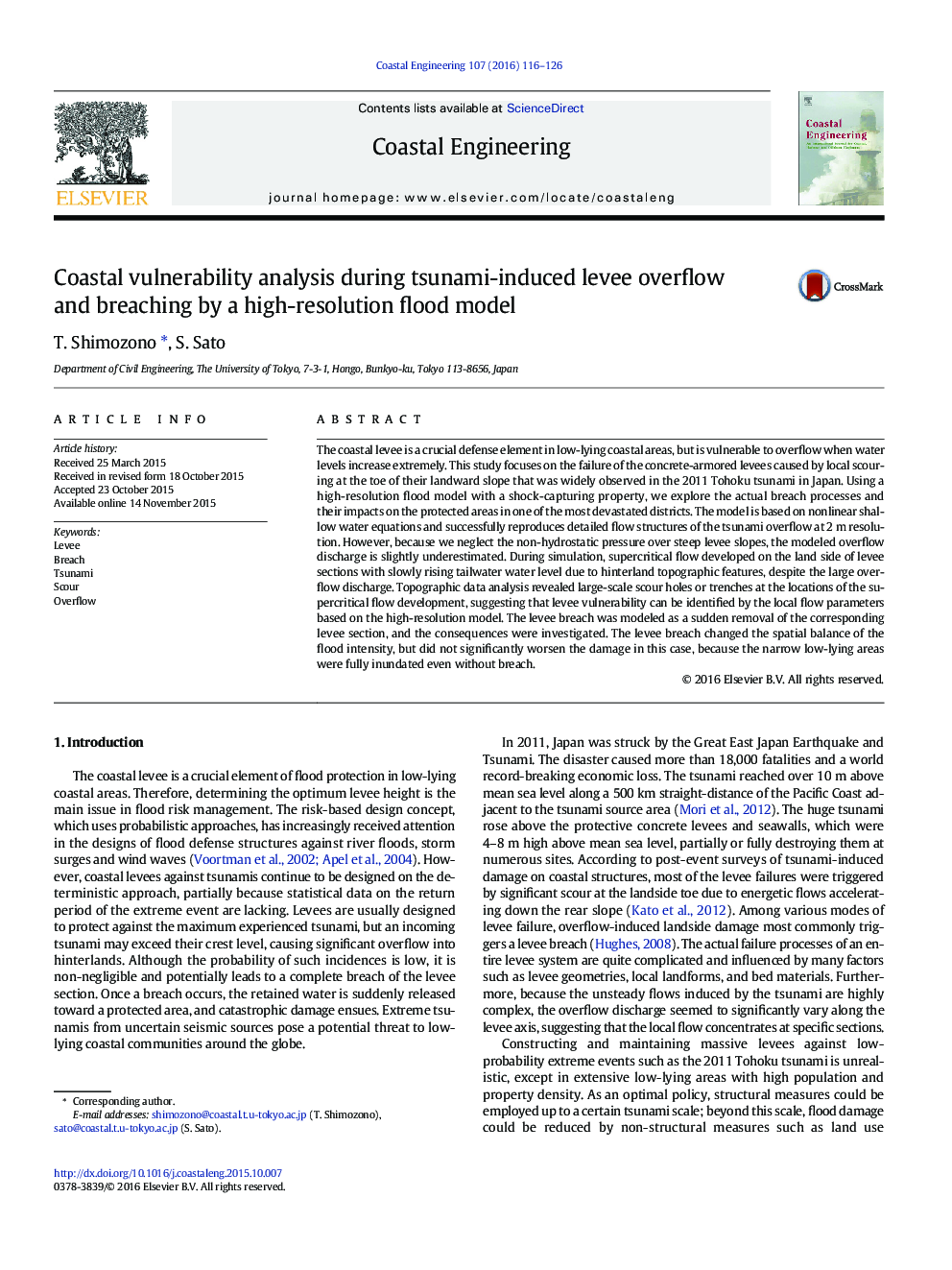| Article ID | Journal | Published Year | Pages | File Type |
|---|---|---|---|---|
| 8059771 | Coastal Engineering | 2016 | 11 Pages |
Abstract
The coastal levee is a crucial defense element in low-lying coastal areas, but is vulnerable to overflow when water levels increase extremely. This study focuses on the failure of the concrete-armored levees caused by local scouring at the toe of their landward slope that was widely observed in the 2011 Tohoku tsunami in Japan. Using a high-resolution flood model with a shock-capturing property, we explore the actual breach processes and their impacts on the protected areas in one of the most devastated districts. The model is based on nonlinear shallow water equations and successfully reproduces detailed flow structures of the tsunami overflow at 2Â m resolution. However, because we neglect the non-hydrostatic pressure over steep levee slopes, the modeled overflow discharge is slightly underestimated. During simulation, supercritical flow developed on the land side of levee sections with slowly rising tailwater water level due to hinterland topographic features, despite the large overflow discharge. Topographic data analysis revealed large-scale scour holes or trenches at the locations of the supercritical flow development, suggesting that levee vulnerability can be identified by the local flow parameters based on the high-resolution model. The levee breach was modeled as a sudden removal of the corresponding levee section, and the consequences were investigated. The levee breach changed the spatial balance of the flood intensity, but did not significantly worsen the damage in this case, because the narrow low-lying areas were fully inundated even without breach.
Related Topics
Physical Sciences and Engineering
Engineering
Ocean Engineering
Authors
T. Shimozono, S. Sato,
